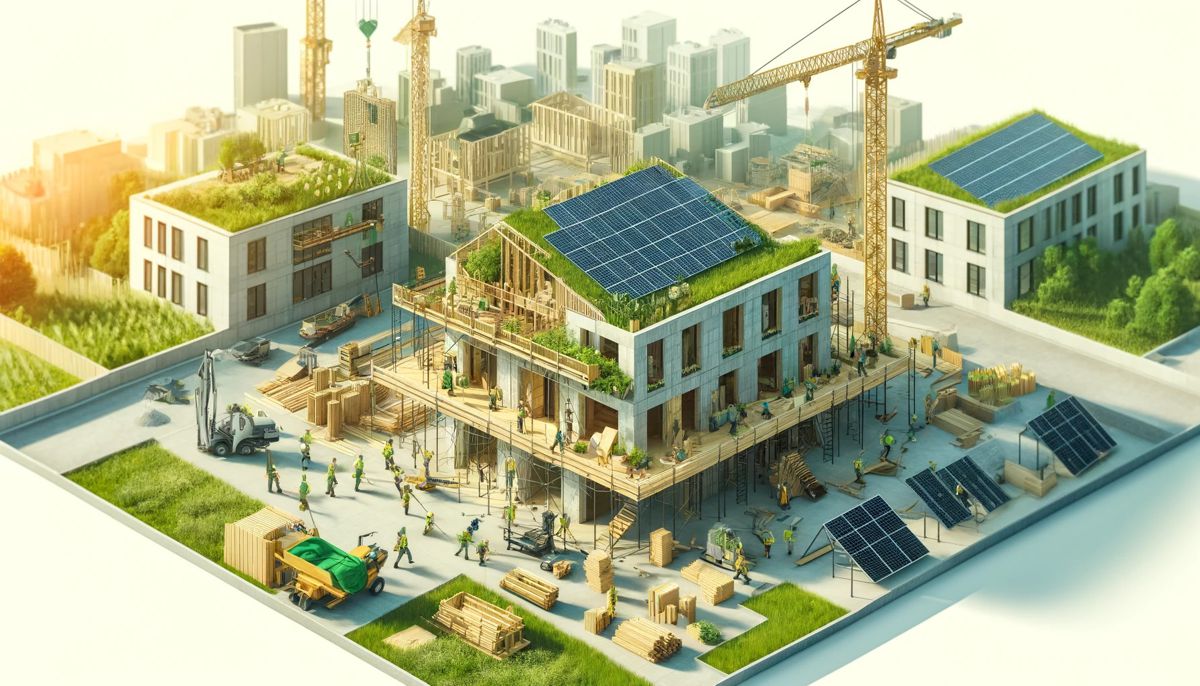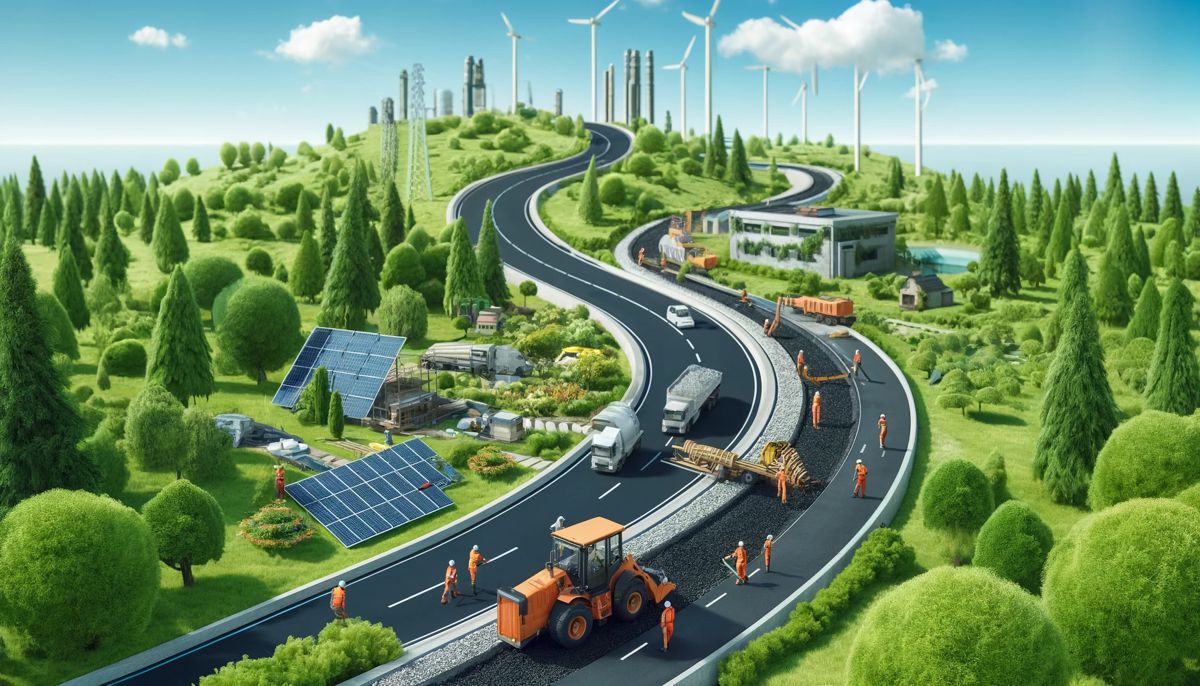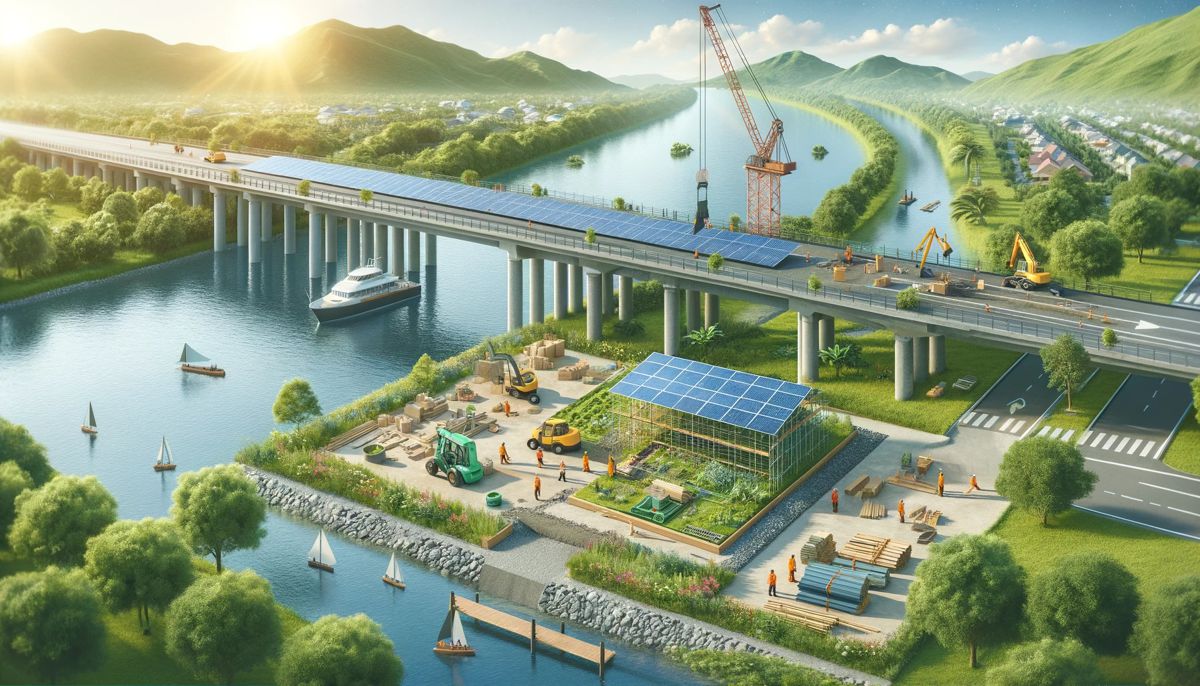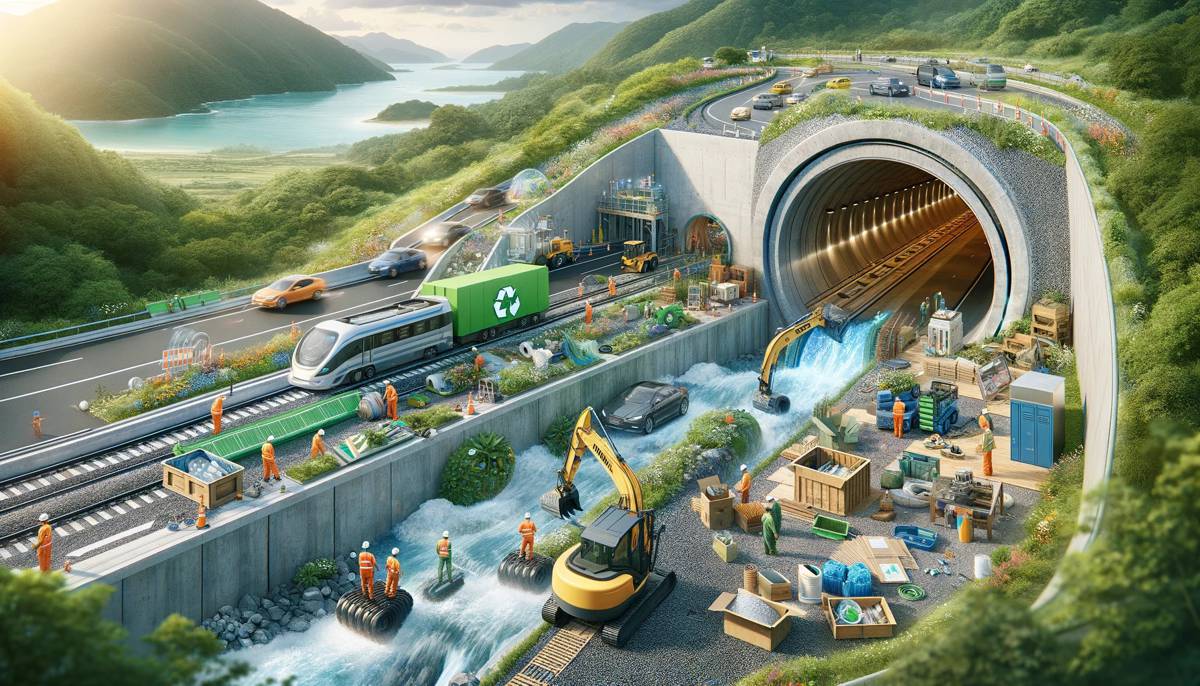Paving the Path to a Greener Tomorrow with Sustainable Innovations
The construction industry is undergoing a transformative shift towards sustainability, driven by the urgent need to reduce its environmental impact.
As we celebrate Sustainable Construction Month at Highways Today, it’s the perfect time to delve into the innovations and practices that are steering the industry towards a greener future.
Decarbonizing Construction: A Herculean Task
Despite the global commitment to reducing carbon emissions, the construction sector remains a significant contributor to pollution, primarily due to its reliance on cement. Cement production alone accounts for approximately 8% of global CO2 emissions. This stark reality underscores the necessity for more effective carbon reduction strategies within the sector.
However, there’s a silver lining. Venture capital investments in construction technology (Contech) have shown resilience even in turbulent economic times, with sustainable solutions emerging as a major focus area.
This trend highlights a growing recognition among investors of the lucrative potential in green construction technologies.

Innovative and Sustainable Building Materials
The quest for sustainable building materials has led to some fascinating innovations:
- Recycled Plastic: Engineers in Scotland have constructed the Easter Dawyck Bridge using 100% recycled thermoplastic materials, repurposing 50 tonnes of plastic waste. This not only provides a durable alternative to wood but also helps tackle the global plastic waste crisis.
- Hempcrete: Made from a mix of hemp and lime, hempcrete is a carbon-absorbing alternative to traditional concrete. The Pierre Chevet Sports Center in France stands as a testament to its effectiveness, using hempcrete to enhance both acoustic and thermal insulation.
- Ferrock: This carbon-negative material, made from 95% recycled materials, offers strength under saltwater, making it ideal for underwater structures. Though currently limited to smaller projects, its potential is immense.
- Timbercrete: Combining timber waste, sand, and cement, Timbercrete offers better thermal efficiency and is significantly lighter than traditional concrete, reducing transportation emissions and costs.
- Reclaimed Steel: Steel remains the most recycled material in construction, with 40% of all steel made from scrap metal. Reclaimed steel can reduce the carbon footprint of structures by 19% compared to concrete.

The Rise of the Eco-Metropolis Model
The eco-metropolis model represents a revolutionary approach to urban development, merging economic growth with ecological preservation. This model advocates for the clustering of industries, services, and technologies to drive innovation while maintaining environmental balance.
Key components include:
- Innovation Meets Conservation: Cities leveraging green technologies can foster economic growth without compromising ecological health. This symbiotic relationship is at the core of the eco-metropolis model.
- Framework for Sustainability: Detailed strategies integrate ecological conservation with urban planning, creating cities that are not only livable but resilient and vibrant.
- Economic Growth Reimagined: Sustainable practices can fuel new economic vitality, opening avenues for innovation and prosperity while prioritizing environmental stewardship.

Protecting Wildlife and Managing Waste
Sustainability in construction extends beyond materials to include practices that protect wildlife and manage waste effectively. For instance, companies like LG Electronics have demonstrated how corporate campuses can preserve open spaces and ecosystems while maintaining operational efficiency.
Moreover, the construction industry produces significant waste, with traditional methods often leading to substantial landfill contributions. Innovative techniques, such as outsourcing sub-components for easy assembly, are helping to mitigate this issue.

Charting the Course for a Sustainable Future
The journey towards sustainable construction is a collective effort requiring collaboration across all sectors. Public-private partnerships, community engagement, and innovative policies are essential to drive this transformation. By embracing these strategies, the construction industry can pave the way for cities that harmonize with nature and support thriving communities.
In conclusion, as we celebrate Sustainable Construction Month, it’s clear that the industry is on the cusp of a green revolution. With innovative materials, forward-thinking urban models, and a commitment to sustainability, the future of construction looks not only brighter but greener.
Let’s embrace these changes and build a world that stands as a testament to our dedication to a sustainable future.




















